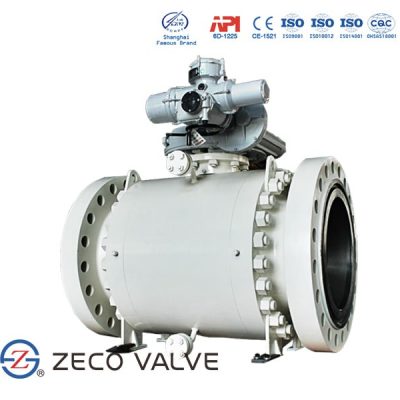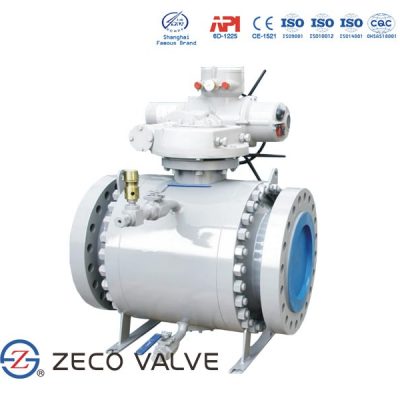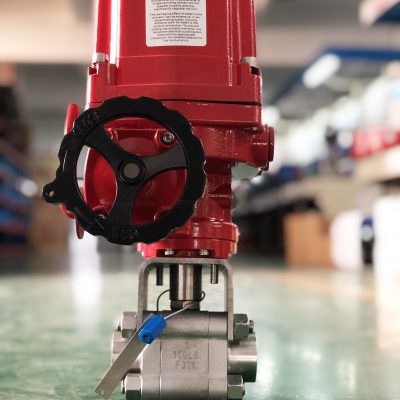Electric Ball Valves are two-way(two ports or two openings) quarter-turn ball valves. The motorized ball valves here are not for regulating flow, they can be fully opened or fully closed automatically receiving a control signal.
What is Ball Valve Electric?
Ball valves can be operated by a handle, Gear, pneumatic, electric or electro-hydraulic, etc. A ball valve operated by an electric device is called an electric ball valve.
How to Choose an Electric Ball Valve?
As both electric devices and ball valves are high-value products, the wrong choice of electric devices and ball valves will result in ball valves not working properly, so when choosing electric ball valves, we often consider how to go about it.
- 1. First of all, we need to choose the right ball valve body, inner parts material, and seat material according to the requirements.
- 2. After determining the ball valve, we need to determine the torque of the ball valve to better select the electric actuator, usually we will add a safety factor of 1.3-1.5 above the measured torque to ensure that the ball valve can be opened by the electric actuator under any working conditions.
- 3 In the choice of electric actuator, we need to confirm the use of working conditions under the voltage and voltage frequency, followed by the requirements of the working conditions to determine the switch type or regulation type of electric actuator, the next matching place can be based on specific requirements to choose the control system, explosion-proof level, etc.
Where are Ball Valve Electric Used?
Typically used for ON/OFF control of water, air, oil, and other compatible media. Valworx electric ball valves use an electric actuator to open and close the valve. These valves are power-to-open and power-to-close. Valve positioner and fail close options are available. Several types of 2-way and 3-way electric ball valves are available in stainless steel, carbon steel, and forged steel.
Electric Acuated
An electric actuated ball valve can be broken down into two main components. The electric actuator (servo motor) and the ball valve. For a 2-way ball valve, the electric motor can turn the ball 90 degrees to be either fully open or fully closed. For a 3-way valve, the electric actuator can turn the ball between different circuits depending if it is an L-port or T-port ball valve. They are mounted together typically with a standard flange adhering to ISO 5211. This allows both the electric actuator or ball valve to be swapped out with another one using the same flange size. There are various housings and sizes of electric ball valves to allow you to find the right one for your application.
An electric actuated ball valve can be controlled to be open or close (2-point or 3-point control) or modulating. A 2-point and 3-point control only requires the electric control valve to be powered on to open or close the valve completely. Once in the position, it does not require power. A modulating electric ball valve is capable of positioning the ball valve opening anywhere between 0 and 100%. Any of the control methods will provide consistent performance in a robust package. Depending on the size of the valve and actuator, they can be fast-acting ball valves for quick flow changes. Oftentimes, there is a manual override feature to turn the valve encase of a power failure. A motorized ball valve is great for remotely controlling and/or for an automated application. They are commonly used as an electric water ball valve or for heating units.





